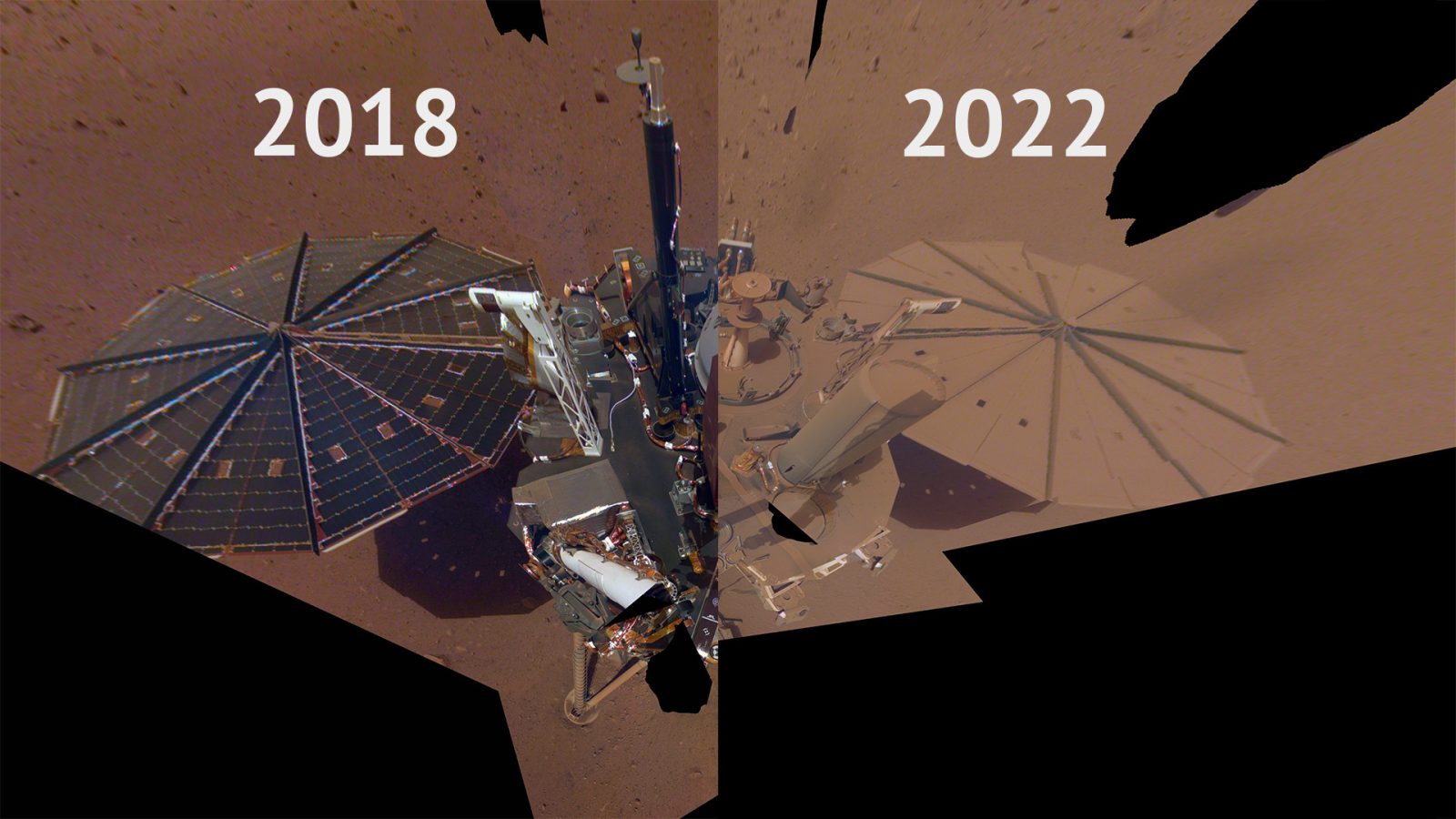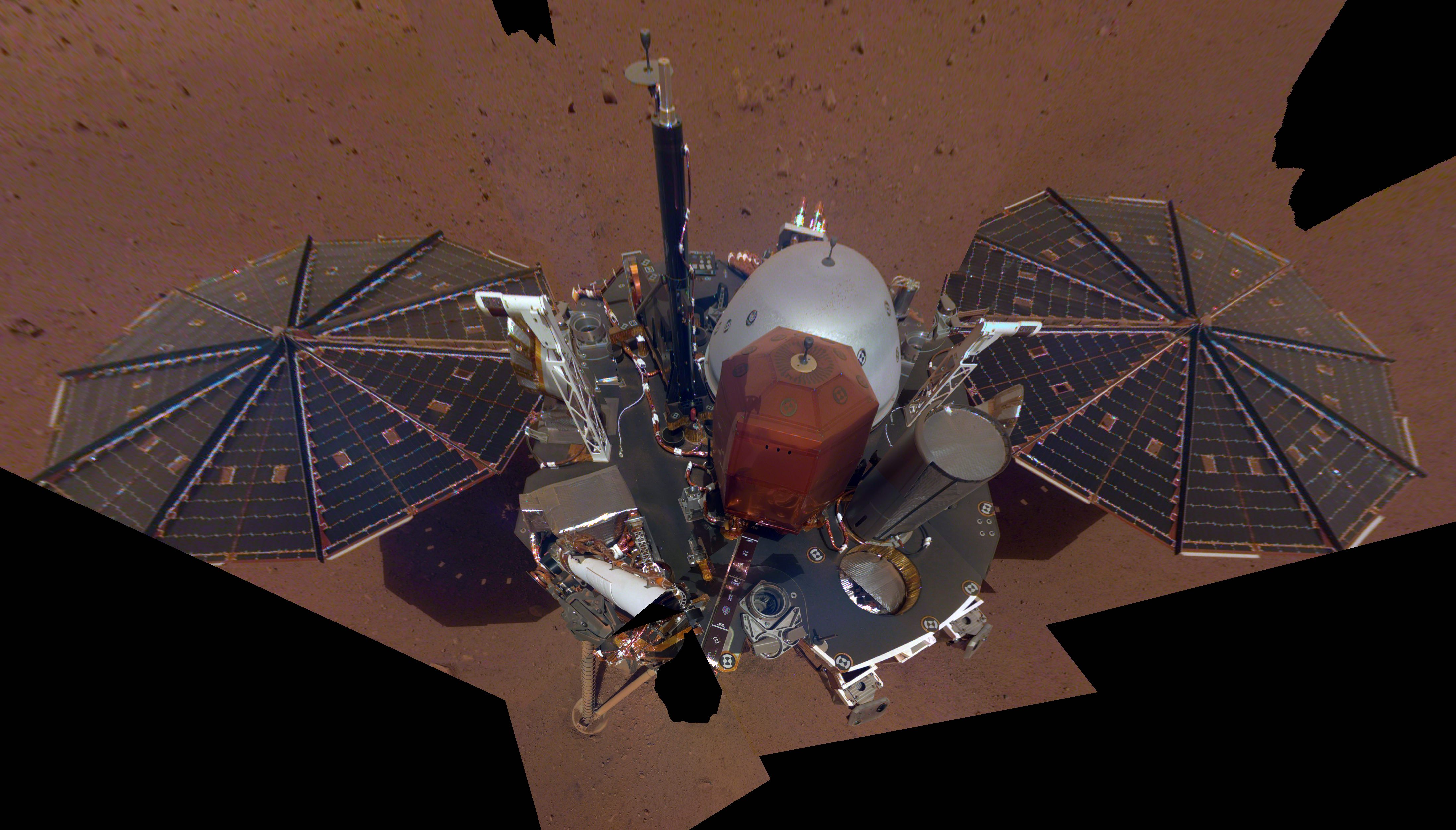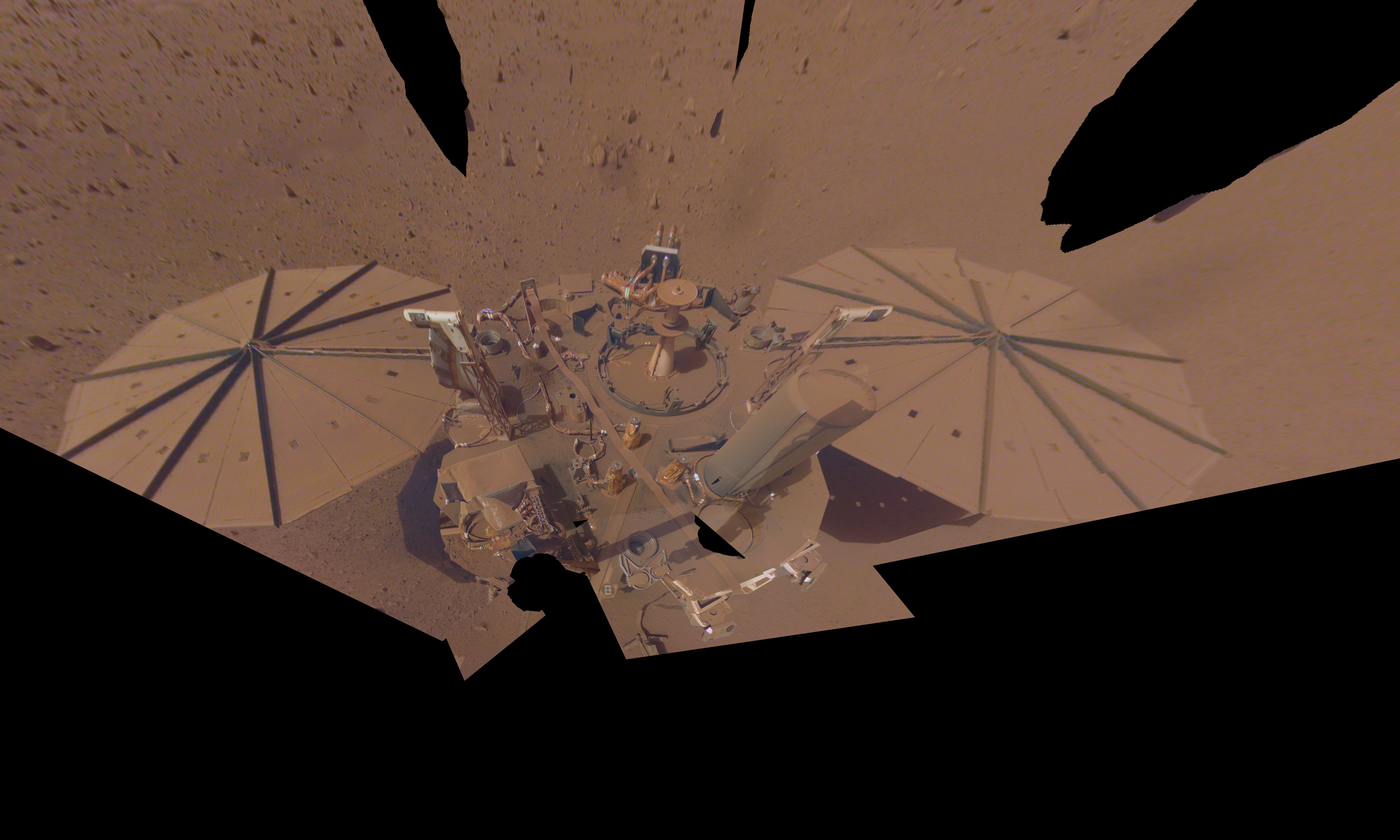
Last week NASA announced the Martian InSight lander’s mission would conclude by the end of this year due to low power. One of the first steps to get the lander ready for that will be placing the arm into its final resting position. So today, NASA shared InSight’s final selfie using the arm’s camera.
Update: While InSight is still expected to run out of power by the end of this year. Science continues, just recently, researchers confirmed it picked up the sound of meteorites hitting Mars’ surface.
The “selfie” is a mosaic of 11 photos taken by InSight’s Instrument Deployment Camera at the end of the lander’s arm. Designed to take up-close pictures of the lander and the surrounding features, NASA has learned to take selfies of its spacecraft using these cameras. The first spacecraft to do so was the Curiosity rover in 2013.
NASA’s final selfie of InSight shows the drastic change that has taken place since the spacecraft landed back in 2018. With dust build-up all over the spacecraft, the photo details why InSight has begun to lose power. Below you can see the difference between the first and final selfie InSight took.
NASA InSight’s first vs. final selfies


Now that NASA’s final selfie of the InSight lander has been taken, teams will move the arms to its retirement pose. The selfie won’t be the last photo taken by InSight’s arm. When there is enough power, photos will be sent back until it has to be shut down entirely.
NASA’s Jet Propulsion Laboratory, which built and now operates the lander, is saving as much of the lander’s power for its seismometer. InSight’s goal was to understand further what is below Mars’ surface with a highly sensitive seismometer and a self digging “mole” designed to dig under the surface. While the mole design failed to reach the depth needed to conduct the heat flow experiment, the seismometer has made many scientific discoveries during its time on Mars.
As you see in its final selfie, NASA needs to shut down InSight’s instruments because of dust build-up on its solar panels. Dust is deadly to solar-powered spacecraft as it restricts the amount of power the panels can produce. InSight, for example, started out producing about 5,000 watt-hours of power every Sol (Martian day) but is now down to only about 500 watt-hours.
JPL is estimating they can keep operating InSight’s seismometer until the end of summer, at which the lander’s science mission will conclude. After that, InSight will continue to send back information about itself until the power gets so low that it goes quiet.
The only hope for InSight’s survival will be for a dust devil to come by and clean off its solar panels. Many other solar-powered missions have experienced these events, NASA’s Opportunity rover experienced several cleanings leading to a much longer than planned mission life. Dust devils have been seen around InSight, but none so far have come to the lander’s rescue, forcing NASA to continue InSight’s shutdown.
At the end of May, InSight’s seismometer will begin operating only during nighttime hours on Mars, where wind levels are lower. This is why JPL believes it can keep running it until the end of summer. However, these observations will only be during select times and eventually won’t be every day.
As we move to a future where NASA’s biggest budget items are the Moon and the Artemis program, fewer missions are being sent to Mars. However, more missions will come, the most exciting being the Mars Sample Return mission, but that is many years away.
FTC: We use income earning auto affiliate links. More.

Comments